Suzhou Key Laboratory of Water Environment Science and Technology, co-established in 2007 by Suzhou Municipal Government, the University of Science and Technology of China, and City University of Hong Kong, is a comprehensive R&D platform for environment science and technology, which offers technological development for water pollution control, application of technological achievements, postgraduate programs as well as social services. The lab has a team of 20 professors and associate professors as researchers, 5 post-doctors and 35 postgraduates. The team has undertaken many research projects above the provincial level in recent years. A series of major achievements have been made in research on functional materials and technology to treat waste water and recover resources from it, technology and equipment to monitor environmental pollutants as well as the geochemical behavior and environmental effects of environmental pollutants, and related application has been carried out through projects. This has thus provided important theoretical and technological support to China in its efforts to protect its ecological environment.
1. Representative Achievements
1.1 New Materials and Technology to Control Water Pollution and Recover Resources from Wastewater
Realizing the effective and selective concentration of various environmental pollutants by making a series of absorbent nanomaterials that are capable of absorbing and desorbing pollutants efficiently, which has bright application prospects in environmental remediation; developing a series of materials to degrade pollutants through advanced oxidation by improving the design of and controlling the crystal faces of regular photocatalytic materials, developing new nanomaterials and technology to concentrate pollutants or degrade them through photo/electro-catalysis (see picture 1 and 2), and applying these results to treatment projects of landfill leachate, printing and dyeing wastewater, and pesticide wastewater; developing new antibacterial membranes based on new nanomaterials and micro-nano structures, including a highly-efficient water treatment membrane that can change according to the size of polymer crystals and an anti-bacterial microfiltration membrane with nano-metallic biomaterials, and applying them to the treatment and deep purification of many kinds of wastewater. Over 60 essays on these achievements have been published on Nature Protocols, Nature Communication, PNAS, Angew and other journals, and 12 invention patents have been authorized.
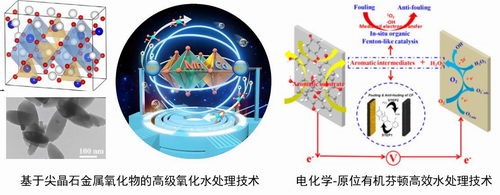
Figure 1 New materials for efficient pollutants degradation with catalysis and new water treatment technology
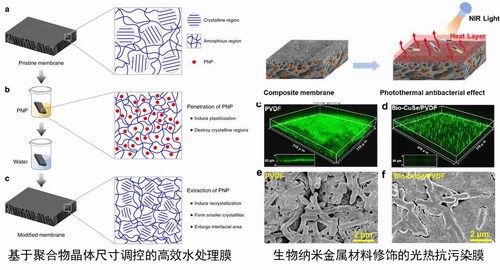
Figure 2 New Antibacterial Membranes and Membrane Water Treatment Technology
1.2 New Materials and Equipment to Detect Environmental pollutants
Developing a series of highly sensitive photochemical and electrochemical sensors, and applying them to on-line detection of various environmental pollutants (see picture 3). An enhanced analysis system of ATR infrared spectroscopy has been developed on the basis of highly-reflective waveguide materials and super-hydrophobic surfaces, which is at least 10 times more sensitive to organic pollutants than other similar technologies and breaks through the limit of current methods not capable of the in situ analysis of complex pollutants with low concentration; a new monitoring technology of bio-membrane in situ analysis has been created by optical-tracking, with high throughput and on the single-cell scale, the nanoscale vibration of microorganisms on different interfaces and by creating the method of bio-membrane in situ spectral interpretation on the basis of 3D Raman imaging and NMF data analysis. Besides, the technology for the whole-process dynamic monitoring of waste water treatment has been developed on the basis of spectral fingerprinting in situ analysis of pollutants and microbial metabolites, which, combined with intelligent control and diagnosis and early-warning technology and equipment, has greatly improved the delicacy operation of sewage plants. Over 40 essays on these achievements have been published on Nature Sustainability, Nature Protocols, PNAS, JAC and other journals, and 9 invention patents have been authorized.
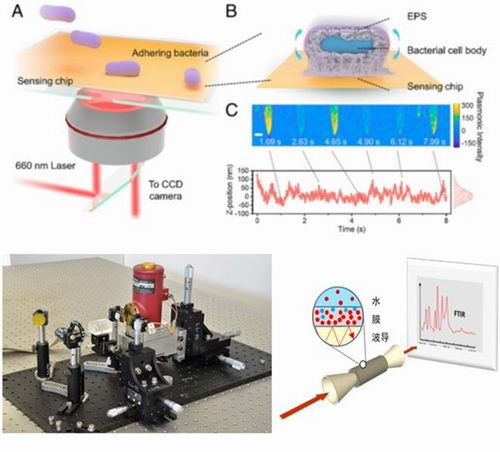
Figure 3 New technology to detect water pollutants:
a) in situ plasma imaging for particulate matter/microbial cells;
b) highly-sensitive in situ infrared spectroscopy detecting for organic pollutants in trace amounts
2. Lab Members
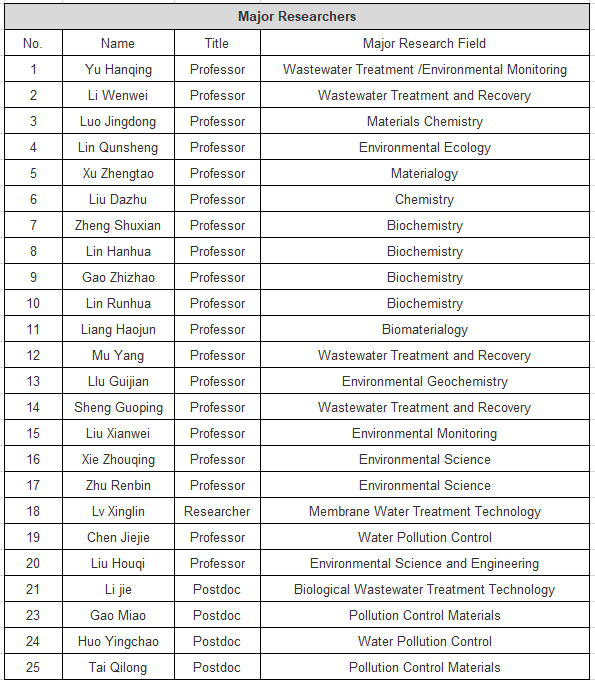

3. Major Equipment
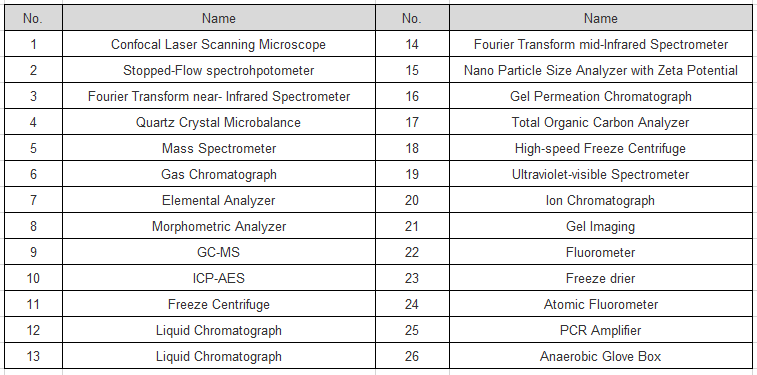
4. Major Achievements in Recent Years
4.1 Published Papers
2021
[1]. Jie Wu, Dong-Feng Liu*, Hui-Hui Li, Di Min, Jia-Qi Liu, Peng Xu, Wen-Wei Li*, Han-Qing Yu, Yong-Guan Zhu. Controlling pathogenic risks of water treatment biotechnologies at the source by genetic editing means. 2021, Environmental Microbiology, doi: 10.1111/1462-2920.15851
[2]. Xian-Zhong Fu, Jie Wu, Shuo Cui, Xue-Meng Wang, Hou-Qi Liu, Ru-Li He, Cheng Yang, Xin Deng, Zhou-Liang Tan, Wen-Wei Li*. Self-regenerable bio-hybrid with biogenic ferrous sulfide nanoparticles for treating high-concentration chromium-containing wastewater. Water Research 2021, 206: 117731
[3]. Dong-Feng Liu and Wen-Wei Li*. Genome Editing Techniques Promise New Breakthroughs in Water Environmental Microbial Biotechnologies. ACS EST Water 2021, 1, 745−747
[4]. Ling-Li Li, Qi-Zhong Wu, Jie-Jie Chen*, Yin-Hua Cui, Cheng-Ming Zhu, Bing-Yan Li, Zhen Guo, and Wen-Wei Li*. Mechanical Insights into Thiol-Mediated Synergetic Biotransformation of Cadmium and Selenium in Nematodes. Environ. Sci. Technol. 2021, 55, 11, 7531–7540
[5]. Yubing Peng, Yunjie Wang, Wen-Wei Li *, Jian Jin. Bio-inspired vertically aligned polyaniline nanofibers layer enabling extremely high-efficient solar membrane distillation for water purification. J. Mater. Chem. A, 2021,9, 10678-10684
[6]. ZY Guo, CX Li, M Gao, X Han, YJ Zhang, WJ Zhang, Wen-Wei Li* (2021) Mn‐O Covalency Governs the Intrinsic Activity of Co‐Mn Spinel Oxides for Boosted Peroxymonosulfate Activation. Angewandte Chemie International Edition, 59: 2–9
[7]. Yang Si†, Zhi-Yan Guo†, Yan Meng, Hui-Hui Li, Lin Chen, Ai-Yong Zhang*, Chao-Hai Gu1, Wen-Wei Li*, Han-Qing Yu (2021), Reusing Sulfur-Poisoned Palladium Waste as Highly-Active, Nonradical Fenton-Like Catalyst for Selective Degradation of Phenolic Pollutants. Environmental Science Technology.
2020
[8]. WJ Liu, Z Xu, D Zhao, XQ Pan, HC Li, X Hu, ZY Fan, WK Wang, GH Zhao, S Jin, GW Huber*, HQ Yu* (2020) Efficient electrochemical production of glucaric acid and H2 via glucose electrolysis. Nature Communications.11: 265. DOI: 10.1038/s41467-019-14.
[9]. Dan-Ni Pei,Chang Liu,Ai-Yong Zhang,Xiao-Qiang Pan,HQ Yu*. (2020). In situ organic Fenton-like catalysis triggered by anodic polymeric intermediates for electrochemical water purification. Proceedings of the National Academy of Sciences 117(49):30966-30972. DOI:10.1073/pnas.2005035117
[10].S Zhang, SF Jiang, BC Huang, XC Shen, WJ Chen, TP Zhou, HY Cheng, BH Cheng, CZ Wu, WW Li, H Jiang*, HQ Yu* (2020) Sustainable production of value-added carbon nanomaterials from pyrolysis byproducts of renewable biomass. Nature Sustainability. DOI: 10.1038/s41893-020-0538-1.
[11].BH Cheng, BC Huang, R Zhang, YL Chen, SF Jiang, Y Lu, XS Zhang, H Jiang*, HQ Yu* (2020) Bio-coal: An renewable and massively producible fuel from lignocellulosic biomass. Science Advance. 6(1), eaay0748, DOI: 10.1126/sciadv.aay0748.
[12].M Sun, LF Zhai, Y Mu*, HQ Yu*. 2020. Bioelectrochemical element conversion reactions towards generation of energy and value-added chemicals. Progress in Energy and Combustion Science. 77, 100814.
[13]. XM Wang, L Huang, YJ Wang, L Xuan, Wen-Wei Li*, LJ Tian*. (2020) Highly efficient near-infrared photothermal antibacterial membrane with incorporated biogenic CuSe nanoparticles Chemical Engineering Journal, 405: 126711
[14].DF Liu, Wen-Wei Li*. (2020) Potential-dependent extracellular electron transfer pathways of exoelectrogens Current Opinion in Chemical Biology, 59:140–146
[15]. BC Huang, Y Lu, Wen-Wei Li*. (2020) Exploiting the energy potential of municipal wastewater inChinaby incorporating tailored anaerobic treatment processes Renewable Energy, 158: 534-540.
[16].Liu YN, Lv ZT, Lv WL, Liu XW*. Plasmonic probing of the adhesion strength of single microbial cells. Proceedings of the National Academy of Sciences of the United States of America, 2020, 117: 27148-27153.
[17].Zhou XL, Yang Y, Wang SP*, Liu XW*. Surface plasmon resonance microscopy: from single‐molecule sensing to single‐cell imaging. Angewandte Chemie International Edition 2020, 59:1776-1785.
[18].CX Li, YY Liu, ZG Guo, YJ Wang, ZY Guo, TC Lau*, Wen-Wei Li*. (2020) Efficient pollutant degradation via non-radical dominated pathway by self-regenerative Ru(bpy)32+/ peroxydisulfate under visible lightChemical Engineering Journal, 400: 125993.
[19]. J Wu, ZH Cheng, D Min, L Cheng, RL He, DF Liu*, WW Li*. (2020) CRISPRi System as an Efficient, Simple Platform for Rapid Identification of Genes Involved in Pollutant Transformation by Aeromonas hydrophila Environmental Science Technology, 54 (6): 3306-3315.
[20].M Gao, L He, ZY Guo, YR Yuan, Wen-Wei Li* (2020) Sulfate-functionalized nickel hydroxide nanobelts for sustained oxygen evolution. ACS Applied Materials & Interfaces 12 (1): 443-450.
[21].XZ Fu, J Li, XR Pan, L Huang, CX Li, S Cui, HQ Liu, ZL Tan, Wen-Wei Li* (2020) A single microbial electrochemical system for CO2 reduction and simultaneous biogas purification, upgrading and sulfur recovery. Bioresource Technology 297: 122448.
[22].JY Lu, YR Yuan, X Hu, WJ Liu, CX Li, HQ Liu, Wen-Wei Li* (2020) MOF-derived Fe2O3/nitrogen/carbon composite as stable heterogeneous electro-Fenton catalyst. Industrial & Engineering Chemistry Research 59: 1800-1808.
[23].XR Pan, L Huang, XZ Fu, YR Yuan, HQ Liu, Wen-Wei Li*, L Yu, QB Zhao, J Zuo, L Chen, PKS Lam (2020) Long-term, selective production of caproate in an anaerobic membrane bioreactor. Bioresource Technology 302: 122865.
2019
[24].LJ Tian, WW Li*, TT Zhu, GH Zhao, XW Liu, JC Dong, PF An, JY Ma, F Shen, C Qian, B Hu, HQ Yu (2019) Acid-stimulated bioassembly of high- performance quantum dots inEscherichia coli. Journal of Materials Chemistry A 7: 18480-18487.
[25]. LJ Tian, NQ Zhou, LH Yu, TT Zhu, WW Li*, PF An, JY Ma, CB Xiang (2019)Bio-assembly of CdSxSe1-x Quantum Dots in Ryegrass. Green Chemistry 21: 6727-6730.
[26]. Qian C, Wu G, Jiang D, Zhao XN, Chen HB, Yang YZ, Liu XW*. Identification of nanoparticles via plasmonic scattering interferometry. Angewandte Chemie International Edition 2019, 58: 4217-4220.
[27]. HQ Zhao, SQ Huang, WQ Xu, YR Wang, YX Wang, CS He, Y Mu*. 2019. Undiscovered Mechanism for Pyrogenic Carbonaceous Matter-Mediated Abiotic Transformation of Azo Dyes by Sulfide. Environmental Science & Technology. 53(8), 4397-4405.
[28].D Chen, JY Shen*, XB Jiang, GY Su, WQ Han, XY Sun, JS Li, Y Mu*, LJ Wang. 2019. Simultaneous debromination and mineralization of bromophenol in an up-flow electricity-stimulated anaerobic system. Water Research.157, 8-18.
[29].M Gao, ZY Guo, XY Wang, WW Li* (2019) Self‐Supported, Sulfate Functionalized Nickel Hydroxides Nanoplates with Enhanced Wettability and Conductivity for High‐Performance Supercapacitors. ChemSusChem 12: 1-10.
[30].JY Lu, XM Wang, HQ Liu, HQ Yu, WW Li* (2019) Optimizing operation of municipal wastewater treatment plants inChina: The remaining barriers and future implications. Environment International 129: 273–278.
[31].LJ Tian, Y Min, XM Wang, JJ Chen, WW Li*, JY Ma, HQ Yu (2019) Biogenic quantum dots for sensitive, label-free detection of mercury ions. ACS Applied Bio Materials 2(6): 2661-2667.
[32]. BC Huang, WW Li*, X Wang, Y Lu, HQ Yu* (2019) Customizing anaerobic digestion- coupled processes for energy-positive and sustainable treatment of municipal wastewater.Renewable & Sustainable Energy Reviews 110: 132-142.
[33].LJ Tian, Y Min, WW Li*, JJ Chen*, NQ Zhou, TT Zhu, DB Li, JY Ma, PF An, LR Zheng, H Huang, YZ Liu, HQ Yu (2019) Substrate metabolism- driven assembly of high-quality CdSxSe1–x quantum dots in Escherichia coli: molecular mechanisms and bioimaging application. ACS Nano 13:5841−5851.
[34].LL Li, YH Cui, LY Lu, YL Liu, CJ Zhu, LJ Tian, WW Li*, X Zhang, H Cheng, JY Ma, J Chu, ZH Tong, HQ Yu* (2019) Selenium stimulates cadmium detoxification in Caenorhabditis elegans through thiols-mediated nanoparticles formation and secretion. Environmental Science Technology 53 (5): 2344–2352.
[35].CX Li, YJ Wang, CB Chen, XZ Fu, S Cui, JY Lu, HQ Liu, WW Li* (2019) Interactions between chlorophenols and peroxymonosulfate: pH dependency and reaction pathways.Science of The Total Environment 664: 133-139.
[36]. L Huang, XZ Fu, S Cui, HQ Liu, HQ Yu, WW Li* (2019) Intracellular polymers production in anaerobic sludge under salt shock and batch fermentation conditions: Experimental and modelling study. Biochemical Engineering Journal 142: 68-73.
[37].CX Li, CB Chen, YJ Wang, XZ Fu, S Cui, JY Lu, J Li, HQ Liu, WW Li*, TC Lau (2019) Insights on the pH-dependent roles of peroxymonosulfate and chlorine ions in phenol oxidative transformation. Chemical Engineering Journal 362, 570-575.
2018
[38]. CB Chen, CX Li, YJ Zhang, YJ Wang, JY Lu, HQ Liu, WW Li* (2018) Cyano-rich mesoporous carbon nitride nanospheres for visible-light-driven photocatalytic degradation of pollutants. Environmental Science: Nano 5, 2966 – 2977.
[39].J Li, CB Chen, DD Wang, CX Li, F Zhang, DB Li, D Min, WW Li*, PKS Lam*, HQ Yu (2018) Solar-driven synchronous photoelectrochemical sulfur recovery and pollutant degradation. ACS Sustainable Chemistry & Engineering 6, 9591-9595.
[40]. L Huang, XR Pan, YZ Wang, CX Li, CB Chen, QB Zhao, Y Mu, HQ Yu, WW Li* (2018) Modeling of acetate-type fermentation of sugar-containing wastewater under acidic pH conditions. Bioresource Technology 248: 148-155.
[41]. CX Li, CB Chen, JY Lu, S Cui, J Li, HQ Liu, WW Li*, F Zhang* (2018) Metal organic framework-derived CoMn2O4 catalyst for heterogeneous activation of peroxymonosulfate and sulfanilamide degradation. Chemical Engineering Journal 337: 101–109.
2017
[42].LJ Tian, WW Li*, TT Zhu, JJ Chen, WK Wang, PF An, L Zhang, JC Dong, Y Guan, DF Liu, NQ Zhou, G Liu, YC Tian, HQ Yu* (2017) Directed biofabrication of nanoparticles through regulating extracellular electron transfer. The Journal of American Chemical Society 139, 12149−12152.
[43].XR Pan, YK Wang, WW Li*, YS Wang, X Wang, Y Cheng, YK Geng, CX Li, PKS Lam, HQ Yu* (2017) Selective co-production of acetate and methane from wastewater during mesophilic anaerobic fermentation under acidic conditions. Environ. Sci.: Water Research & Technology 3, 720-725.
[44].LJ Tian, Y Peng, DL Chen, JY Ma, HQ Yu, WW Li* (2017) Spectral insights into the transformation and distribution of CdSe quantum dots in microorganisms during food-chain transport. Scientific Reports 7: 4370.
[45]. LJ Tian, NQ Zhou, XW Liu*, X Zhang, TT Zhu, LL Li, WW Li*, HQ Yu (2017) Fluorescence dynamics of the biosynthesized CdSe quantum dots in Candida utilis, Scientific Reports, 7: 2048.
[46]. CB Chen, F Zhang, CX Li, JY Lu, S Cui, HQ Liu, WW Li* (2017) A magnetic CoFe2O4–CNS nanocomposite as an efficient, recyclable catalyst for peroxymonosulfate activation and pollutant degradation. RSC Advances 7, 55020.
2016
[47]. R Lu#, WW Li# (Co-1st author), B Mizaikoff, A Katzir, Y Raichlin, GP Sheng, HQ Yu* (2016) High-sensitivity infrared attenuated total reflectance sensors for in situ multicomponent detection of volatile organic compounds in water. Nature Protocols 11 (2): 377–386.
[48]. WW Li, HQ Yu* (2016) Advances in energy-producing anaerobic biotechnologies for municipal wastewater treatment. Engineering 2: 438–446.
[49]. X Xiao, WW Zhu, H Yuan, WW Li∗, Q Li, HQ Yu* (2016) Biosynthesis of FeS nanoparticles from contaminant degradation in one single system. Biochemical Engineering Journal 105: 214–219.
[50]. YC Huo, WW Li∗, CB Chen, CX Li, RJ Zeng, TC Lau, TY Huang (2016) Biogenic FeS accelerates reductive dechlorination of carbon tetrachloride by Shewanella putrefaciens CN32. Enzyme and Microbial Technology 95: 236-241.
[51]. JC Zheng, HQ Liu, HM Feng, WW Li*, MHW Lam, PKS Lam, HQ Yu* (2016) Competitive sorption of heavy metals by water hyacinth roots. Environmental Pollution 219: 837-845
[52]. X Xiao, WW Zhu, YB Lei, QY Liu, Q Li and WW Li* (2016) Zwitterionic buffer-induced visible light excitation of TiO2 for efficient pollutant photodegradation. RSC Advances 6, 35449
[53]. XZ Zhu, F Zhang, WW Li*, J Li, LL Li, HQ Yu, MS Huang, TY Huang (2016) Insights into enhanced current generation of an osmotic microbial fuel cell under membrane fouling condition. Journal of Membrane Science 504: 40-46.
[54]. YP Wang, SS Yu, J Li, WW Li*, HQ Yu (2016) Tuning microbial electrogenic activity by uncouplers. Process Biochemistry 51: 1885-1889.
4.2 Authorized Patents in Recent Years
[1]. Li Wenwei, Wang Yunkun, Yu Hanqing. The filtration resistance testing device and method for the coarse filter membrane of DMBR, Invention Patent, 2013 (ZL201110117411.5).
[2]. Yu Hanqing, Li Wenwei, Liu Shaogen. The fast cultivation system and method for aerobic granular sludge, Invention Patent, 2012 (ZL 201110108534.2).
[3]. Li Wenwei, Zhu Xianzheng, Yu Hanqing, Zhang Feng. A kind of FO membrane-microbial fuel cell, Invention Patent, 2017 (ZL 201410393376.3).
[4]. Li Wenwei, Li jie, Yu Hanqing, Liu Houqi, Zhang Feng. Photoelectrochemical reaction cell and method for treating hydrogen sulfide waste gas and waste water, Invention Patent, 2021 (ZL201810432057.7).
[5]. Li Wenwei, Wang Dandan, Liu Houqi, A method for preparing iron/carbon composite material, Invention Patent, 2019 (ZL201710064168.2).
[6]. Li Wenwei, Chen Changbing, Yu Hanqing, Li Chenxuan, Liu Houqi, A preparation method of CoFe2O4/g-C3N4 magnetic nano material, Invention Patent, 2019 (ZL201710004846.6).
Contact Information
Suzhou Key Laboratory of Water Environment Science and Technology in Jiangsu
Address: Zhishan Buliding, No.166, Renai Road, Industrial Park, Suzhou City, 215123.
Contact No:(+ 086) 512-8716 1370 (Ms. Wu / Mr. Liu)

Suzhou Institute for Advanced Research, University of Science and Technology of China,No.99 Ruo'shui Road( Ruo'shuiCampus), No.188 Ren'ai Road(West Campus), No.166 Ren'ai Road(East Campus), Suzhou Dushu Lake Science and Education Innovation District, Suzhou Industrial Park(SIP), Suzhou, Jiangsu, 215123, P.R.China
Email: suzhou@ustc.edu.cn
TEL:86-512-87161188
Fax:86-512-87161100
